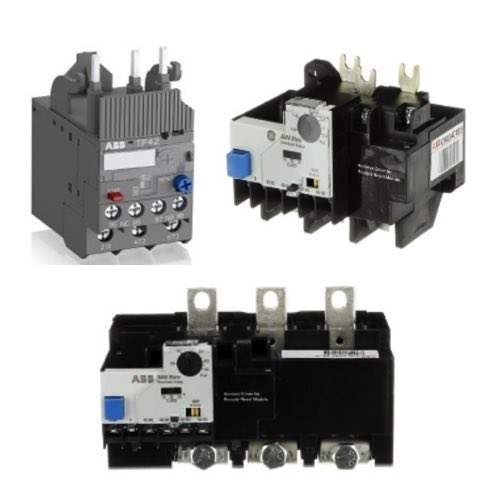ABB Starter Overload Relays

ABB starter overload relays are engineered for dependable motor protection and long-lasting performance. These relays are designed to safeguard motors from overloads, phase failures, and excessive current, ensuring safe and efficient operation across industrial, commercial, and manufacturing environments.
ABB overload relays function as precision electromechanical protection devices that sense and react to abnormal operating conditions. By monitoring the heat generated inside the motor, these relays automatically disconnect power when the temperature rises beyond safe limits; preventing damage, downtime, and costly repairs. When paired with ABB contactors and motor starters, these relays form a complete and reliable motor protection system. They are easy to install in compact control panels, requiring no special tools and minimal space. Adjustable trip settings allow users to fine-tune the relay’s performance for specific motor types and operating profiles, providing flexibility for a wide range of applications.
ABB overload relays are available in manual or automatic reset versions, giving operators options for continuous or controlled restart capability depending on the environment and safety requirements. Their proven durability, precision, and ease of integration make them a trusted solution for protecting motors across virtually any industrial system.
FAQs
Q: What do ABB overload relays protect against?
ABB overload relays protect motors from excessive current, phase loss, and overheating, ensuring reliable performance and extended motor life.
Q: Can ABB overload relays be used with any contactor?
Yes. ABB overload relays are designed to integrate seamlessly with ABB contactors and motor starters but are also compatible with most standard motor control systems.
Q: Do ABB overload relays require manual reset after a phase failure?
Yes. After a phase failure, ABB thermal overload relays generally require a manual reset to safely restore motor operation.
Q: Are ABB overload relays adjustable?
Yes. They feature adjustable trip settings and selectable trip classes, allowing precise customization to different motor sizes and load conditions.
Q: How are ABB overload relays installed?
ABB overload relays include single mounting kits for fast, simple installation in motor control panels without special tools.
Why Buy ABB Overload Relays from RSP Supply
RSP Supply is a trusted ABB distributor providing high-quality starter overload relays and motor protection components. With fast shipping, expert support, and competitive pricing, we help industrial and commercial customers design safe, efficient motor control systems backed by ABB’s proven reliability.

